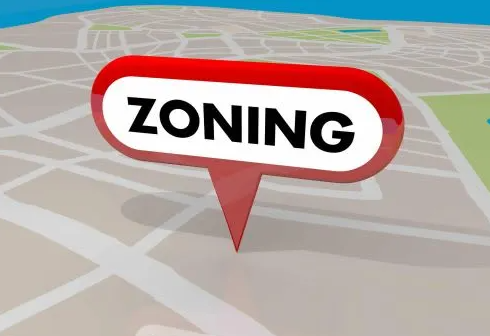More than 306 billion emails are sent and received each day. And companies have reported that they make $36 for every U.S. dollar they spent on email marketing. However, this success would not be possible if marketers applied a one-size-fits all model to their marketing communications. The most effective strategies for email marketing campaigns apply customer segmentation, personalized messaging, and triggered automation sends. The goal of email marketing is to reach the right customer with the right message at the right time.
We’ve gathered 12 must-have campaigns for your existing customer base to grow revenue, loyalty, and retention.
Onboarding
1. Welcome Emails: Crafting First Impressions
As soon as you have converted your prospect into a customer, it is time for you to ensure they don’t experience buyer’s remorse. This first automated message welcomes them to your brand and reinforces the value of their purchase decision. Use this communication to explain important next steps, the value of your product or service, and what they can expect from your future marketing communications.
Consider including information about any warranties or guarantees that come with their purchase, as well as any additional resources or support that may be available to them. This will help to build trust and instill confidence in your brand.
2. Customer Onboarding Series
For more complex products, consider a series of onboarding emails to ensure users are getting the most out of their purchase.
Determine the most important steps of the lifecycle journey where a customer will achieve the most value from your service or where they are most likely to run into obstacles. By doing so, you can increase customer engagement and retention, and reduce churn rates. These campaigns should be personalized based on demographic factors, customer behavior and tier level of their purchase. Prioritize the features they need to activate, and send reminders, educational videos, downloadable resources, and infographics.
3.Social Proof Emails: Building Trust
Social proof is a powerful tool that can help you establish credibility and trust with your new customers. By showcasing positive testimonials, reviews, case studies, or usergenerated content, you can show your new customers that they are in good hands and that others have had a positive experience with your product or service. This can help to alleviate any doubts or concerns they may have and make them more likely to make a purchase or work with you in the future. When creating social proof emails, it's important to keep in mind the tone and messaging of your brand. You want to showcase your customer's positive experiences without coming across as a sales message.
4. Feedback Surveys: Enhancing the Experience
Early in the lifecycle is a key moment to get a pulse for how things are going. Collecting customer feedback is vital for improving your products and services. Create targeted feedback surveys to understand your audience's preferences and pain points. Use this information to refine your offerings and demonstrate that you value customer opinions. And for negative feedback, be sure your customer success team reaches out to solve the problem. Consider implementing a customer feedback program that rewards customers for sharing their thoughts and ideas. By prioritizing customer feedback, you can build a loyal customer base and continuously improve your business.
Engagement
5. Newsletter Campaigns: Engaging Content for Subscribers
Keeping your audience informed and engaged is the primary goal of newsletter campaigns. Newsletters provide an excellent platform to share valuable content, industry updates, special events, and exclusive offers. Ensure a consistent schedule and relevant content to maintain subscriber interest. Your newsletter content should aim to be informative, creative and engaging. Consider including articles, infographics, videos, or podcasts that your users will find valuable. You should also consider including interactive elements such as polls, quizzes, or surveys. This will provide valuable insights into your subscribers' preferences and help you tailor your content to their needs.
6. Product Announcements: Presenting New Features
Showcase your latest upgrades through targeted product announcement emails. However, not every update warrants an announcement to avoid annoying users. For instance, smaller bug fixes can be silently updated without an email, while significant changes like product redesigns or feature additions require a communication. Announcing product updates can help boost user engagement, drive feature discovery and adoption, and enhance customer loyalty.
7. Event Invitations: Driving Attendance
Whether it's a webinar, product launch, or in-person event, use compelling emails to drive attendance. Consider offering early access, VIP seating, or special perks to those who RSVP early.
8.Holiday Promotions: Capitalizing on Festive Seasons
Leverage the holiday spirit to boost sales and engagement. Plan and execute holiday-themed email campaigns that align with your brand. This approach allows you to connect with your audience during peak shopping seasons. To make the most out of holiday promotions, it's important to start planning early and create a cohesive strategy that aligns with your brand's values and messaging. Additionally, make sure to incorporate festive visuals and messaging in your email campaigns and social media posts to create a sense of excitement and urgency.
Cross-Sell and Upgrade
9. Limited-Time Offers: Creating Scarcity
Implementing limited-time offers can be a powerful tool in your email campaigns. Leverage the psychological power of scarcity by crafting compelling messages that emphasize the exclusivity and time-sensitive nature of the promotion. By doing so, you can create a sense of urgency and drive conversions.
10. Complementary Products: Maximizing Revenue
Encourage additional purchases by implementing cross-sell and upsell campaigns. Recommend complementary products or upgrades based on customers' previous purchases. Use look-a-like data from other customers to determine the likelihood of a similar upgrade.
11. Abandoned Cart: Recover Sidetracked Customers
Cart abandonment is a common issue, with various reasons for why consumers may leave your site without completing their purchase. It could be due to competition from other vendors, wanting to wait for a sale or coupon code, shipping preferences or perhaps they were simply sidetracked. Combat this by implementing effective abandoned cart emails. Start by sending a sequence of emails, with the initial message not offering a discount. Then, follow up with attractive incentives in subsequent emails to re-engage the customer and encourage them to complete their purchase.
12. Birthday or Anniversary Emails: Build Customer Loyalty
Sending a birthday or anniversary email to your customers is a simple yet effective way to show them that you value their business. By personalizing the message and offering a special discount or exclusive perk, you not only make them feel appreciated, but you also increase the chances of them returning to make a purchase. You can also use birthday rewards to test different offers such as 20% off vs $10 off or free shipping.
In Conclusion
Integrating these diverse email marketing campaigns into your strategy can enhance customer engagement, drive sales, and build lasting relationships. Tailor your approach based on your brand, industry, and the preferences of your audience to maximize the effectiveness of your email marketing efforts.
At Fayre Marketing, we partner with businesses to drive revenue, customer retention, and loyalty through email marketing. Grow your email list and boost engagement with an award-winning email marketing consultant. We start by analyzing the needs of your customers to build a personalized email communications strategy to onboard, engage, retain, and grow your customer base.












